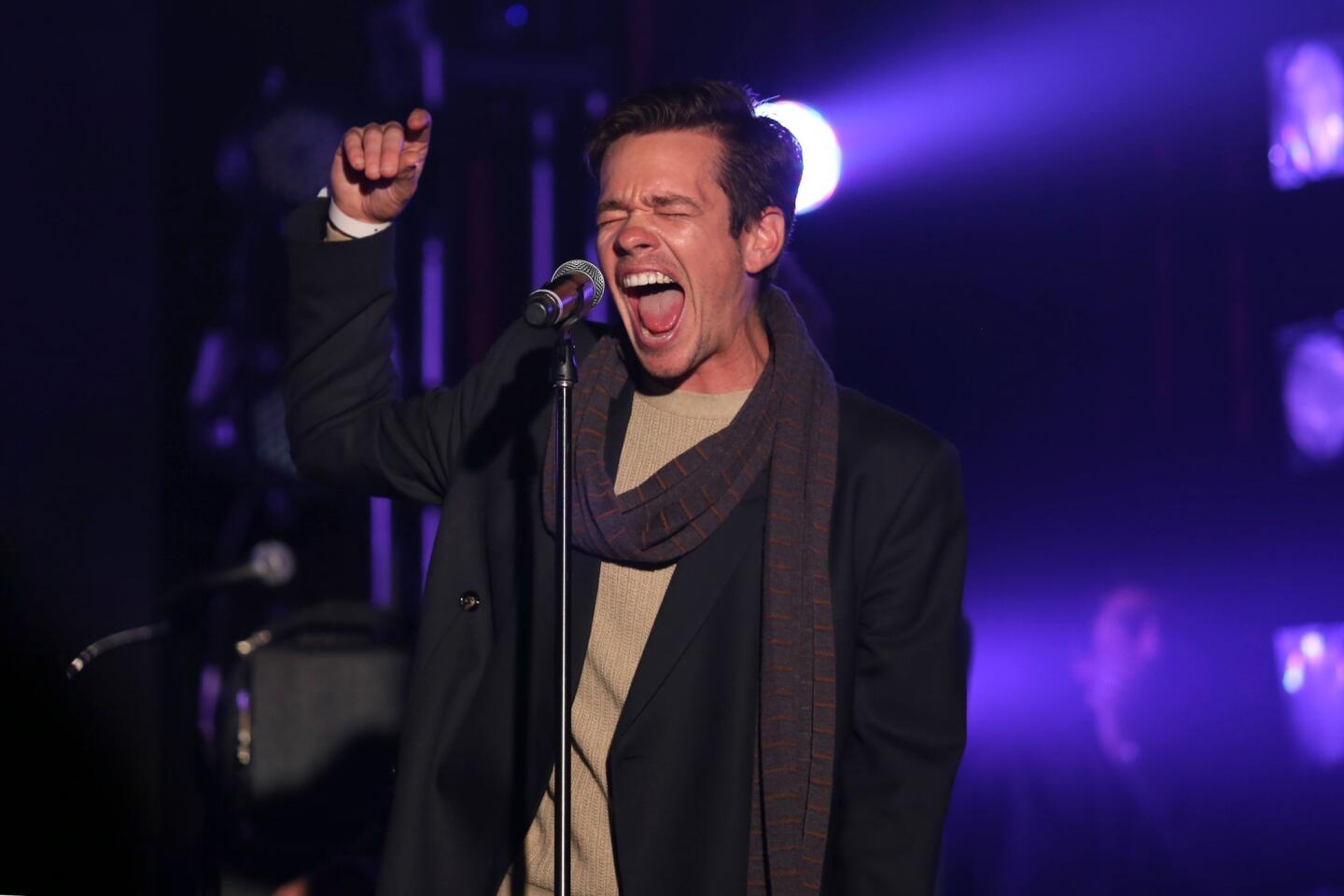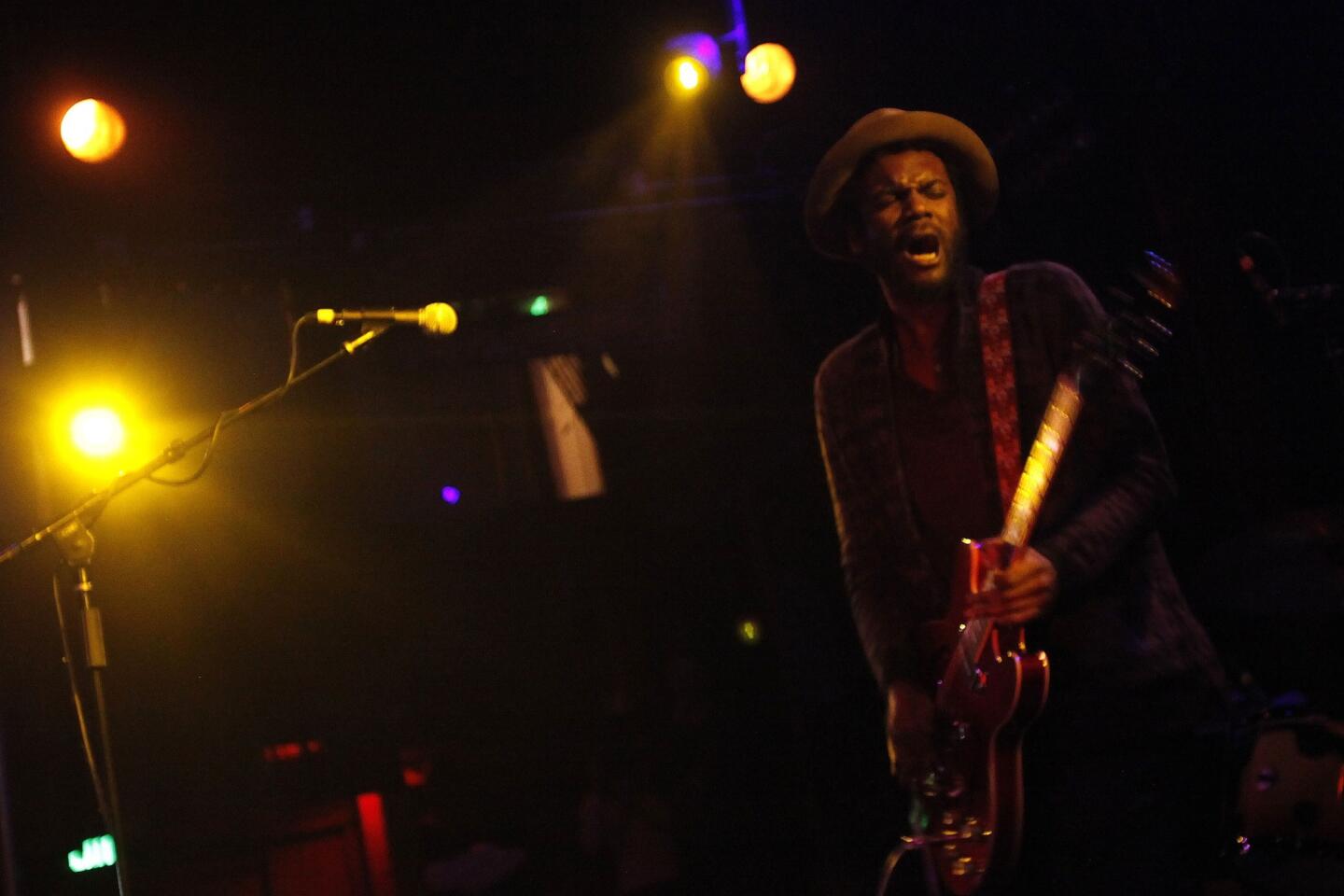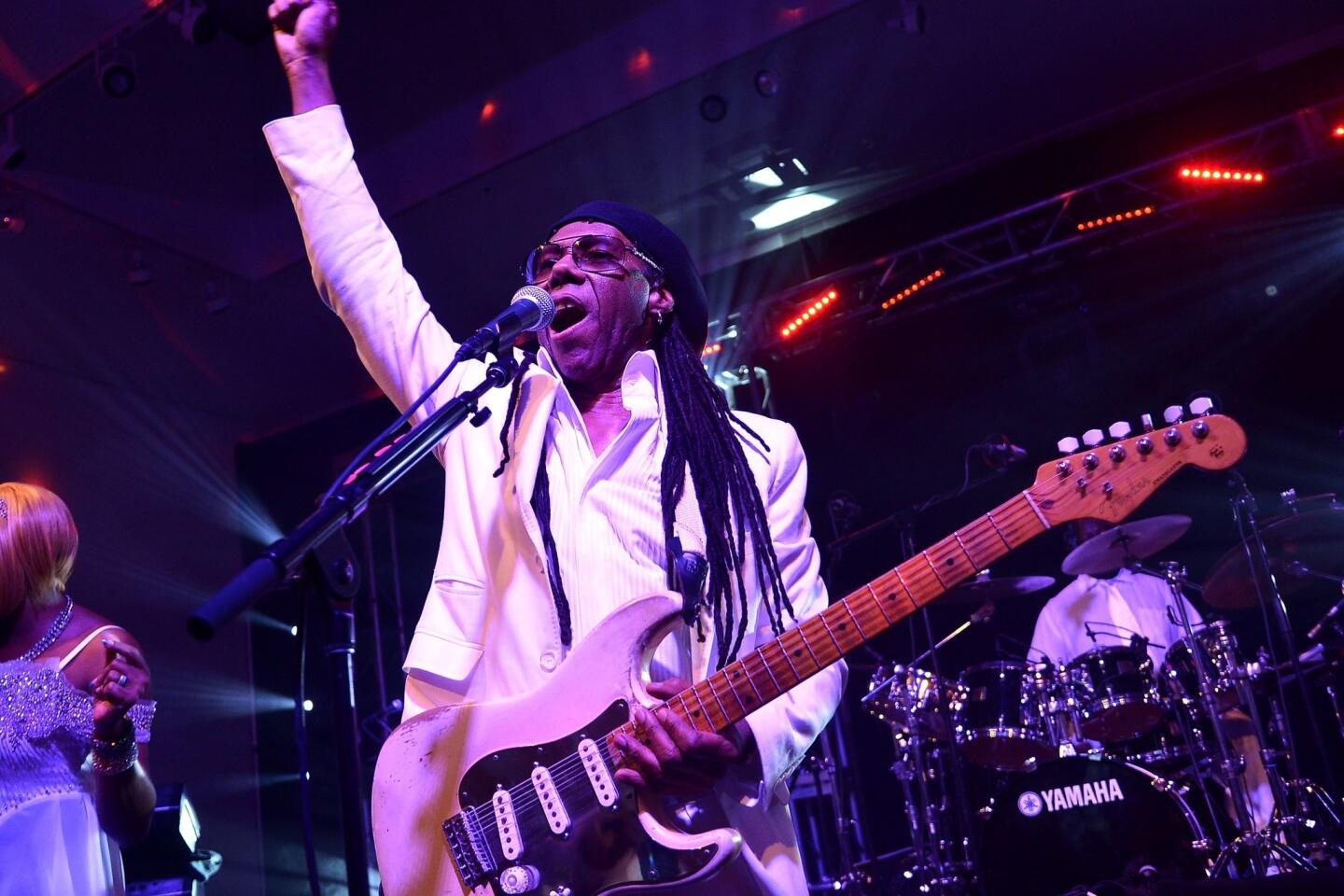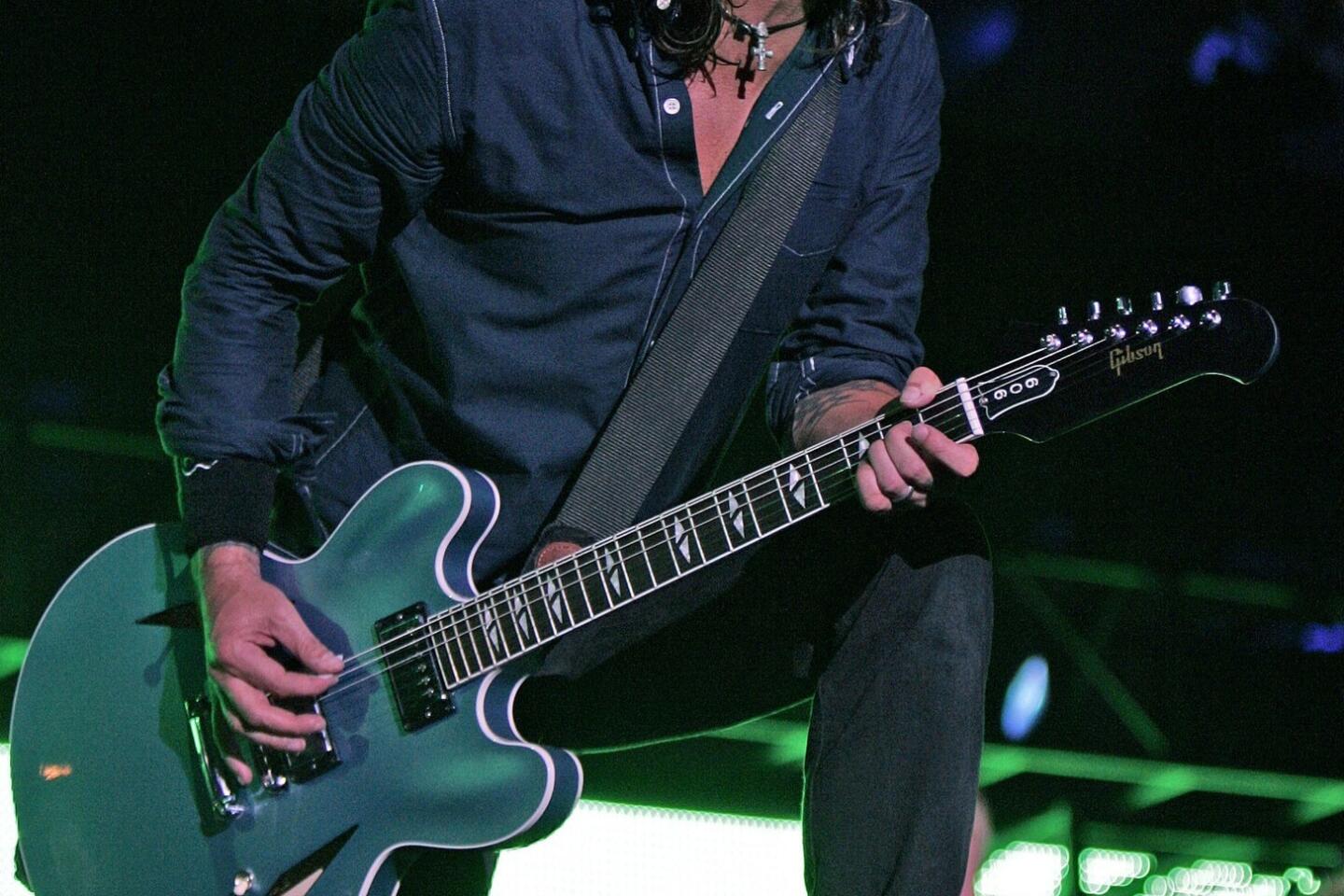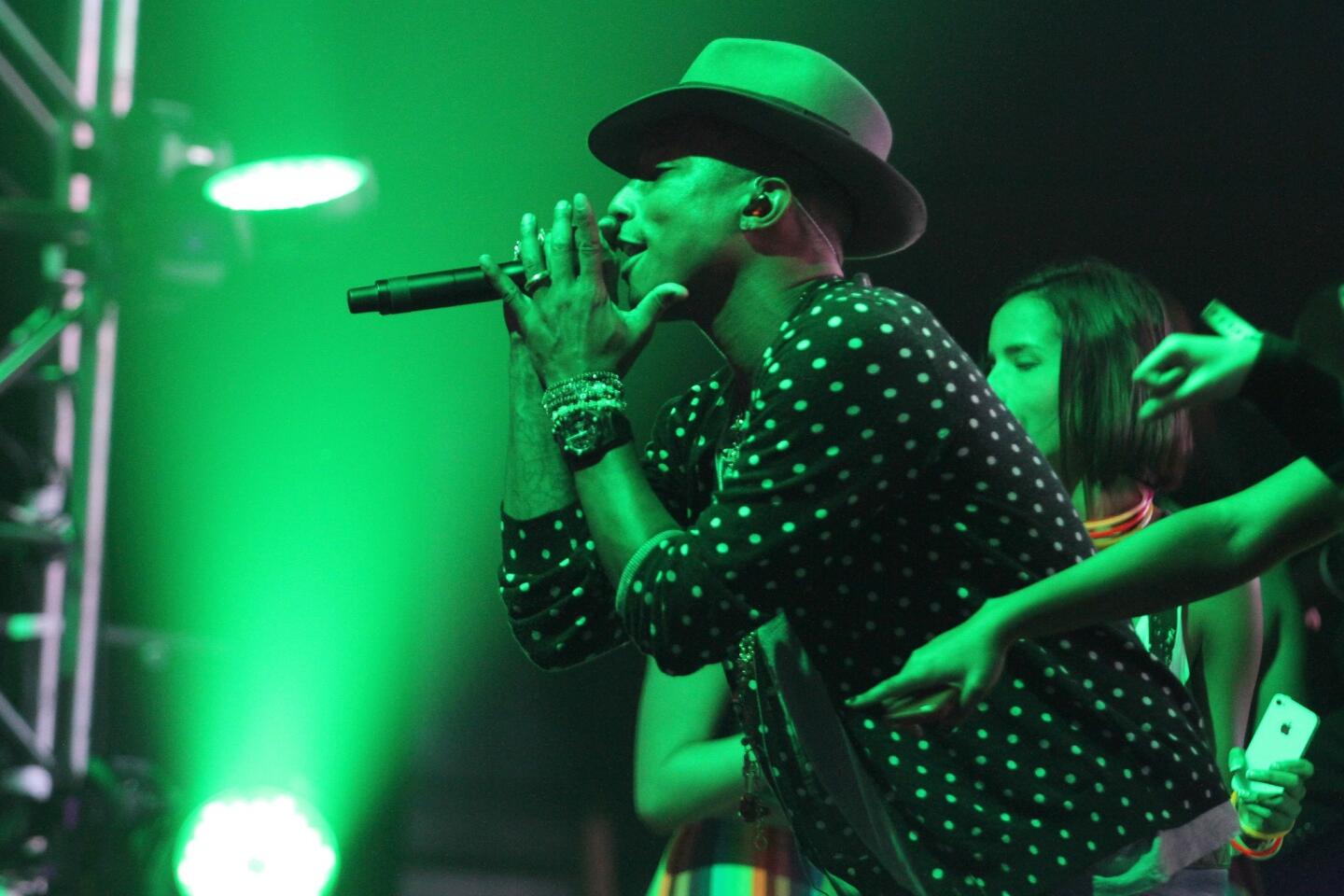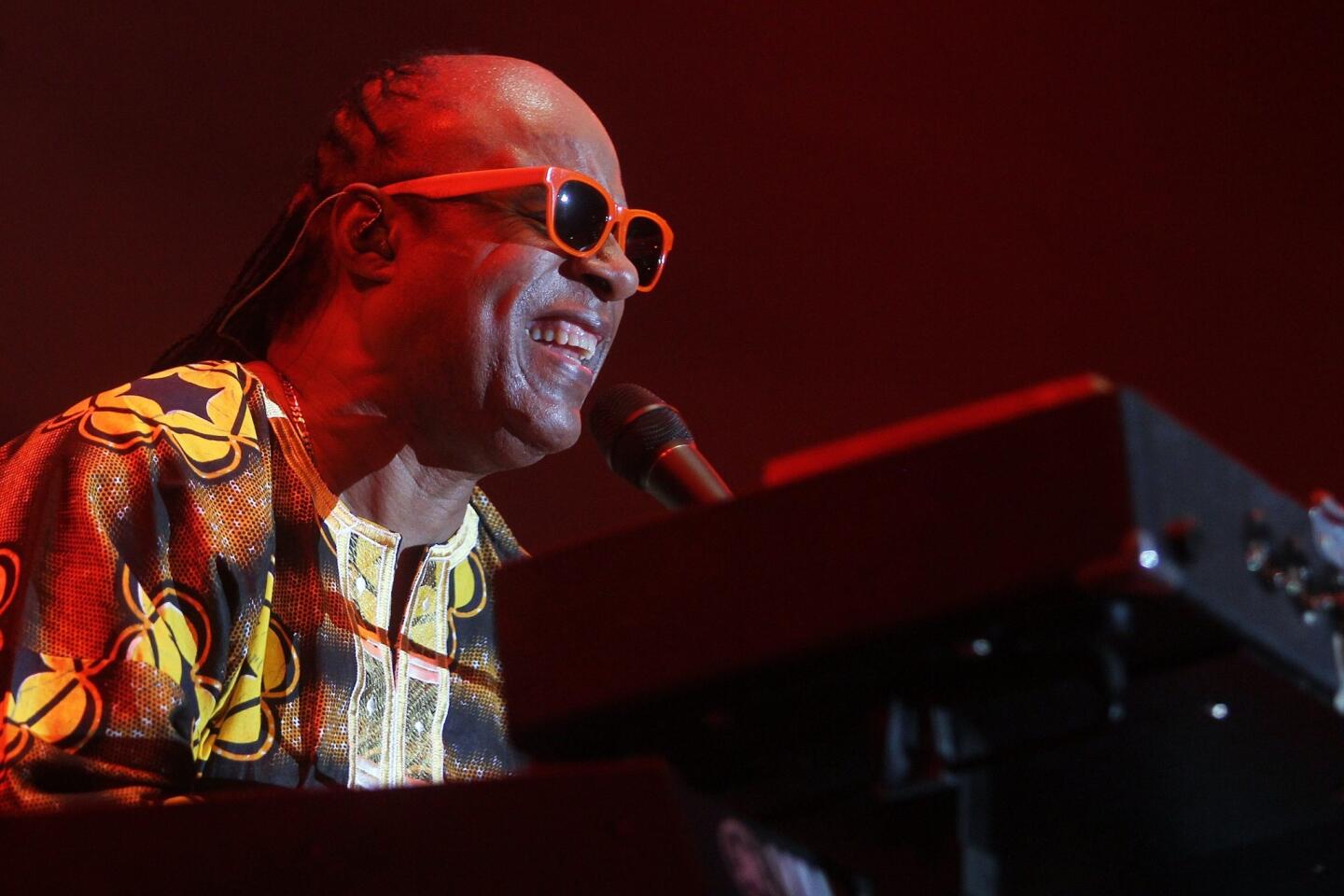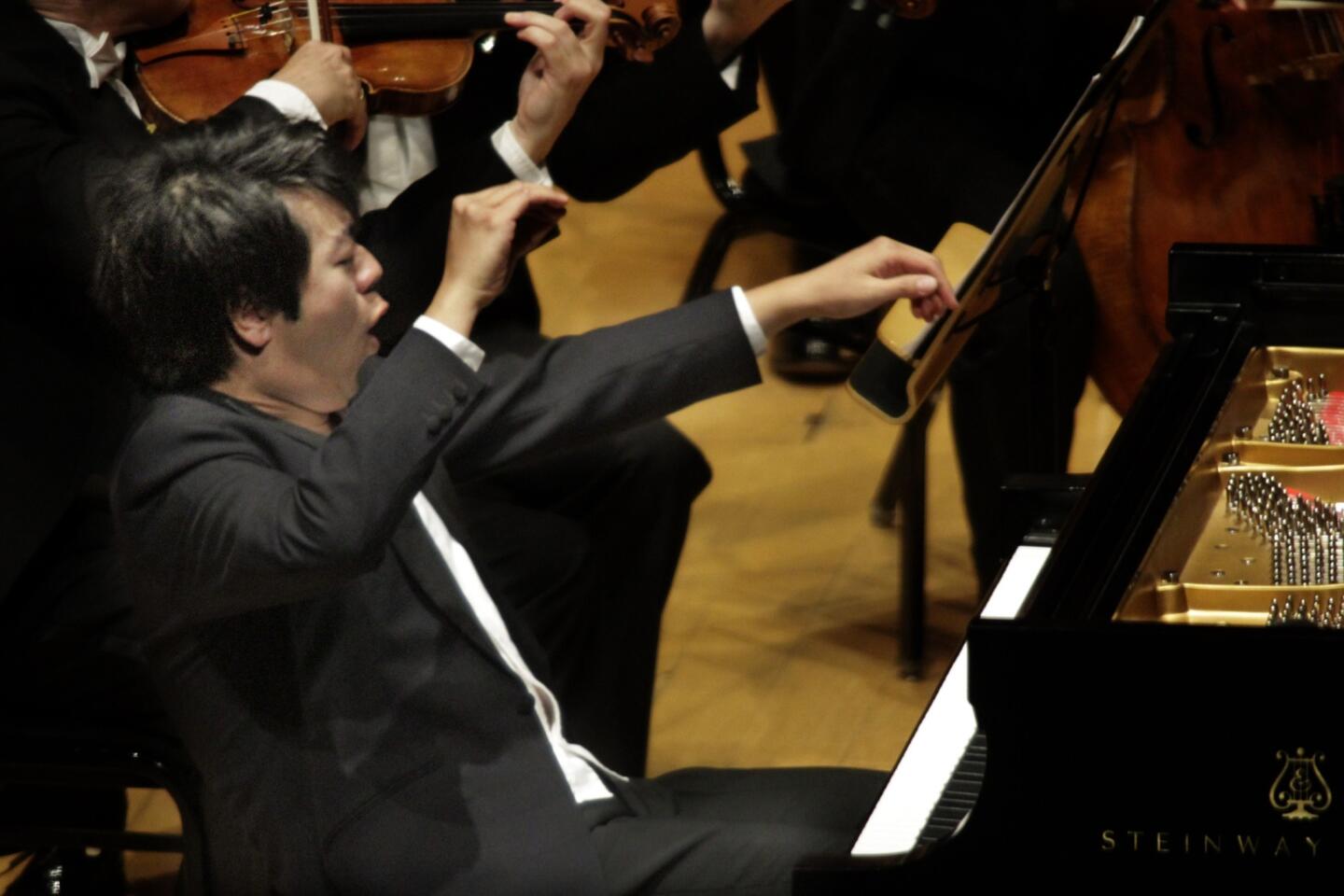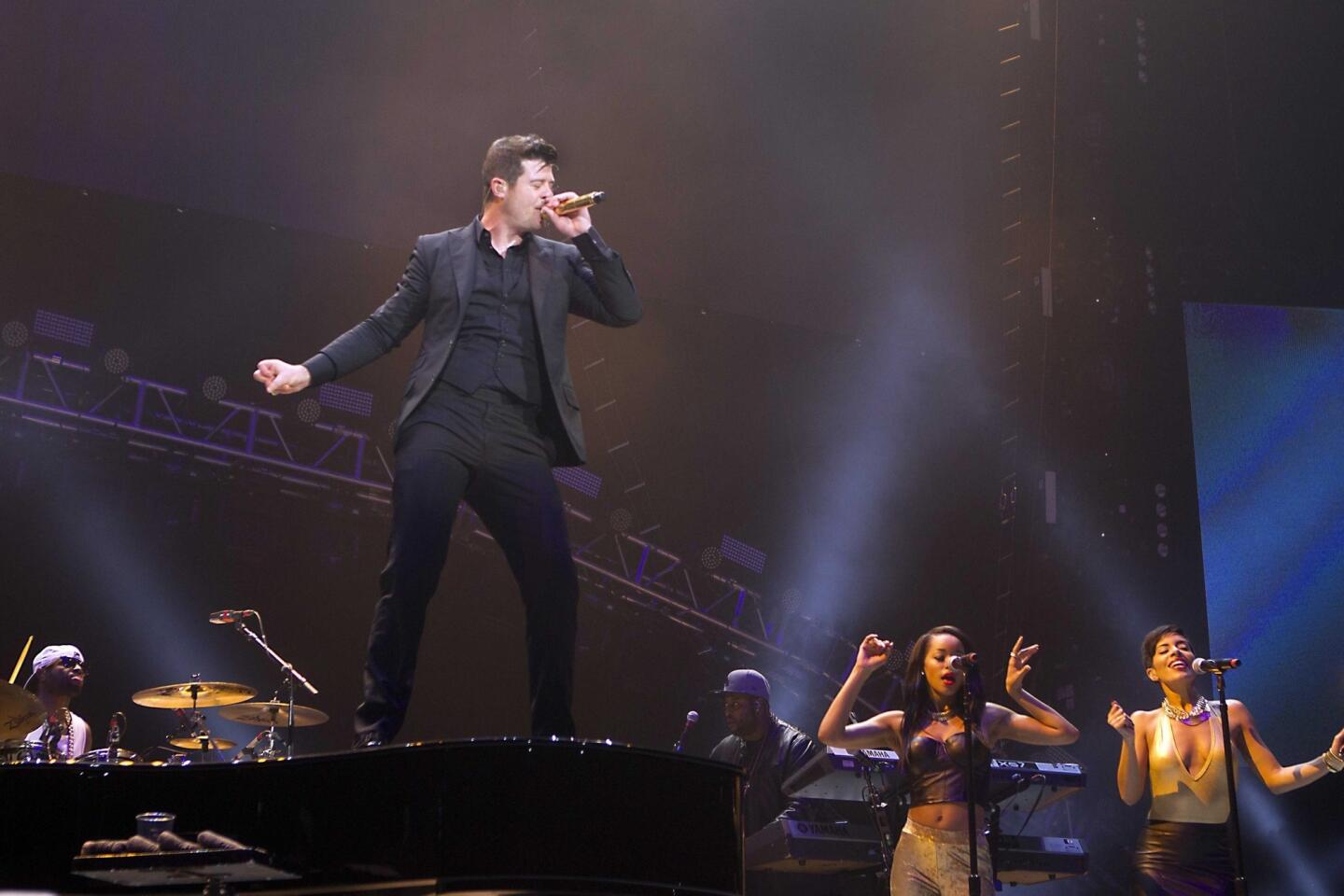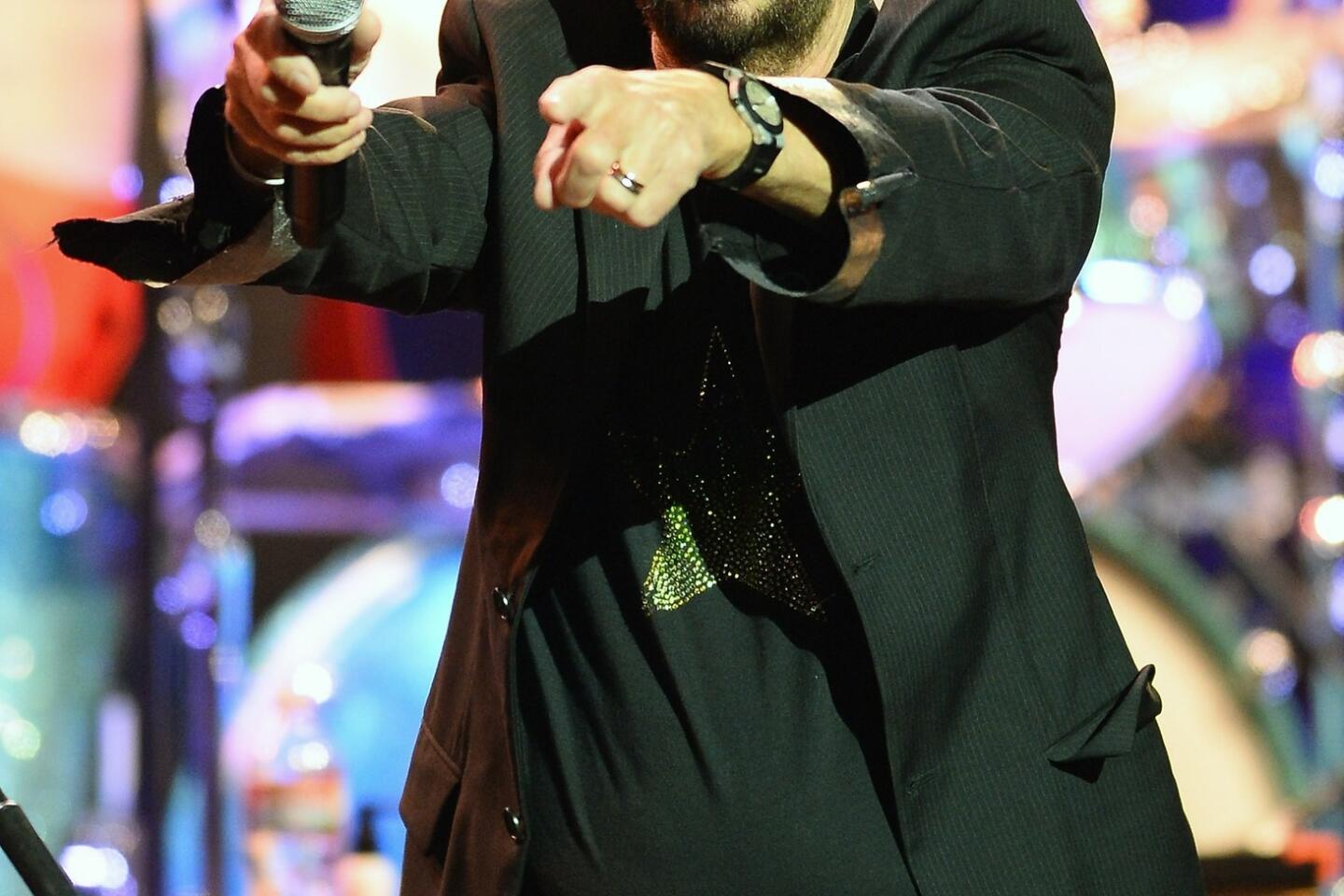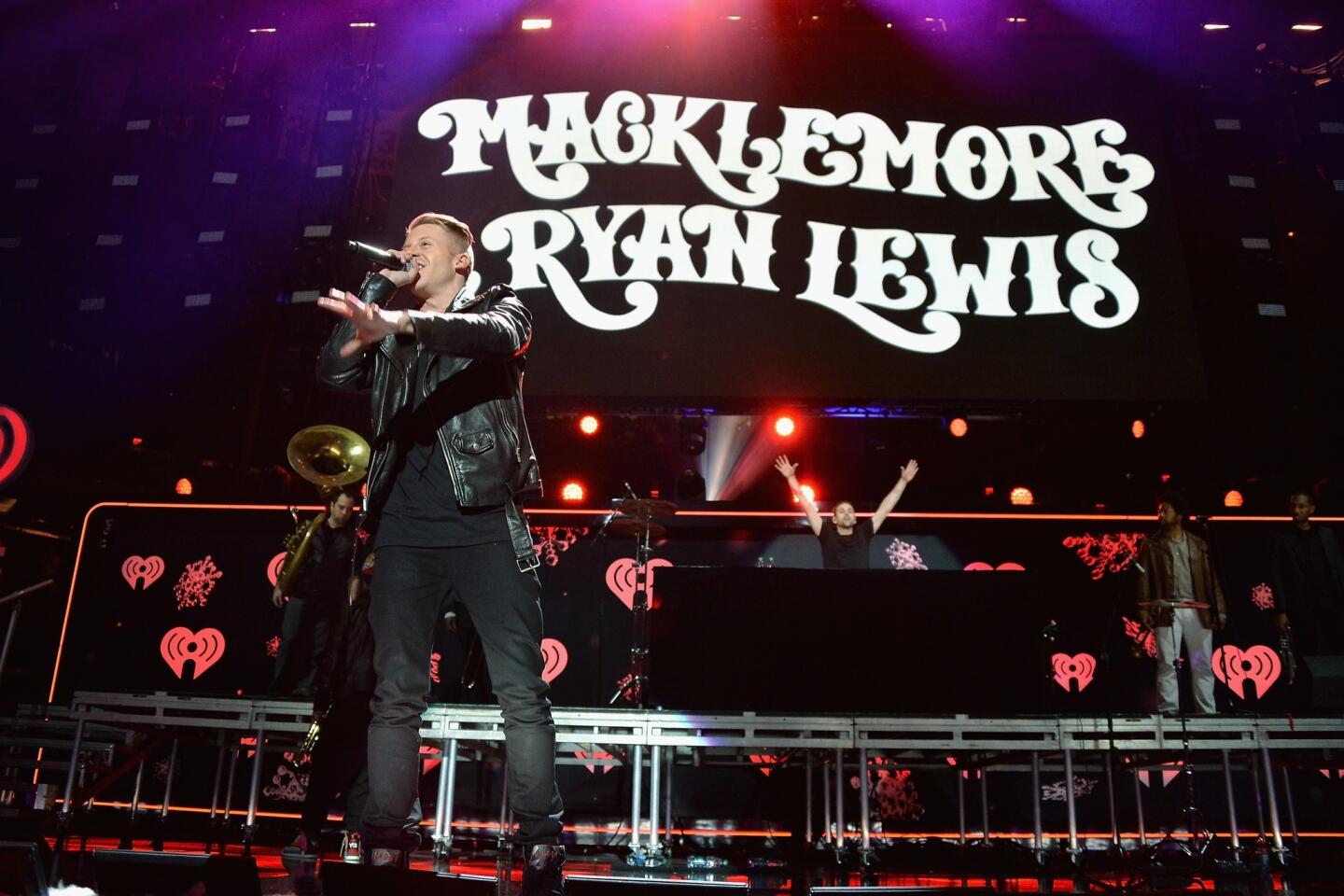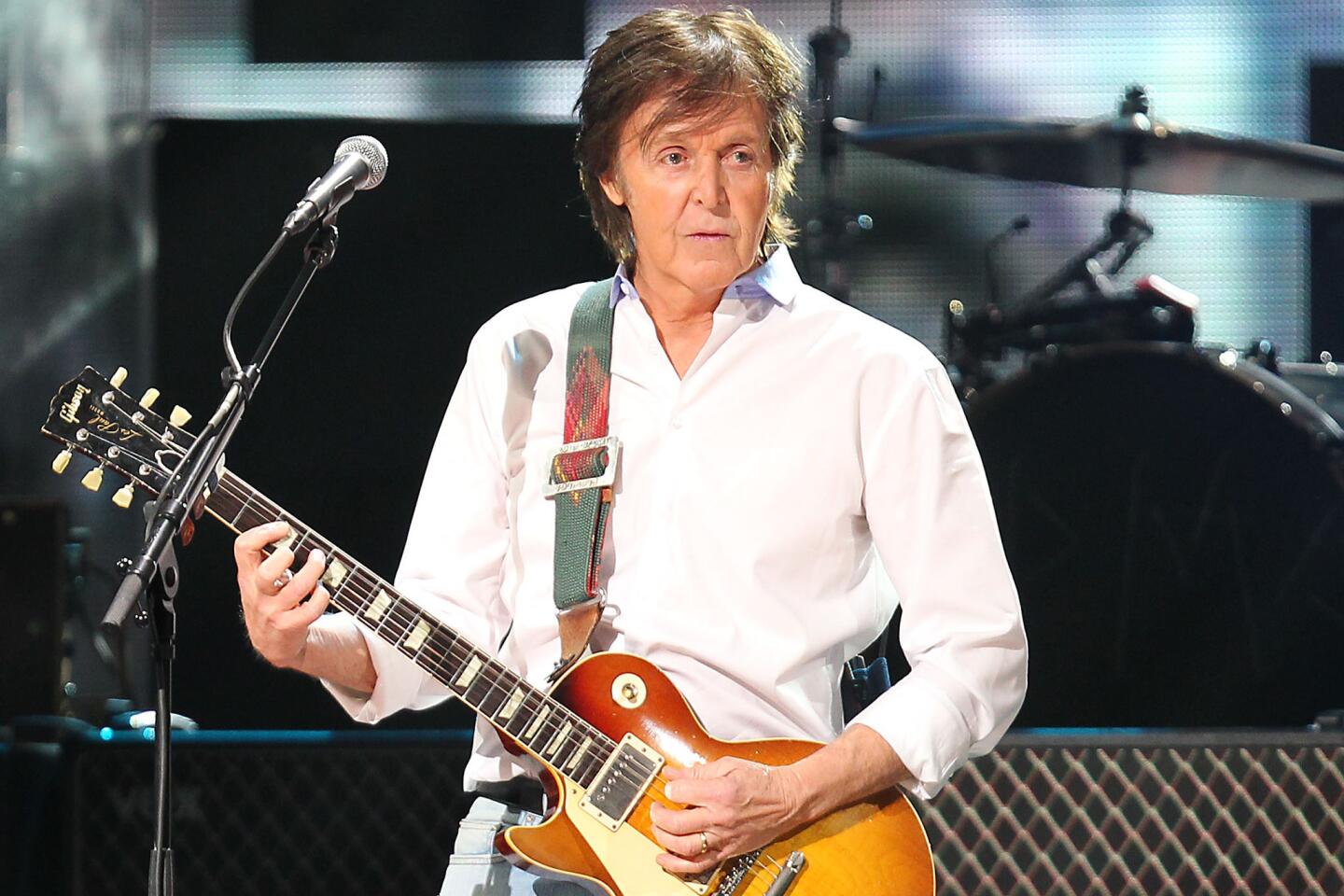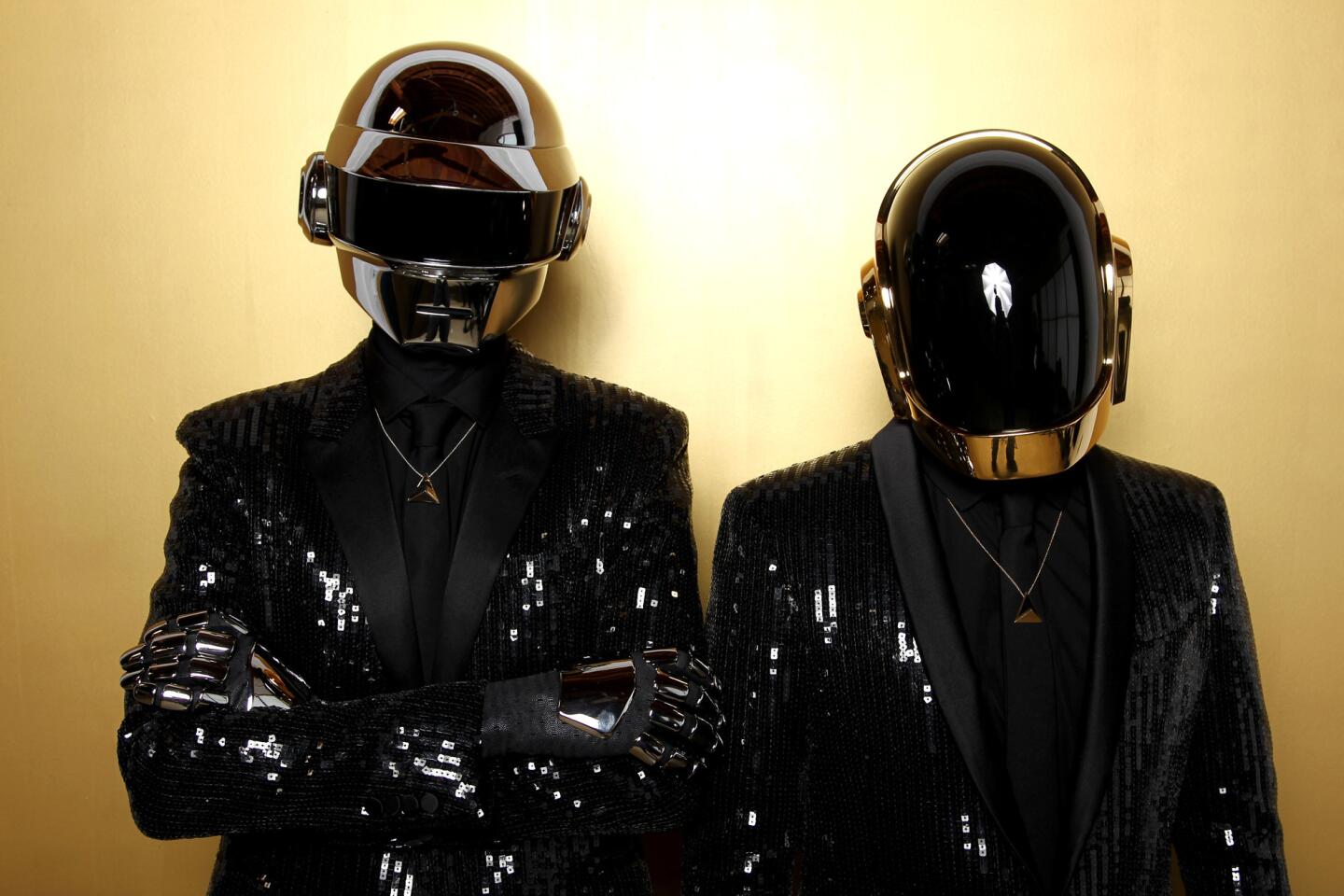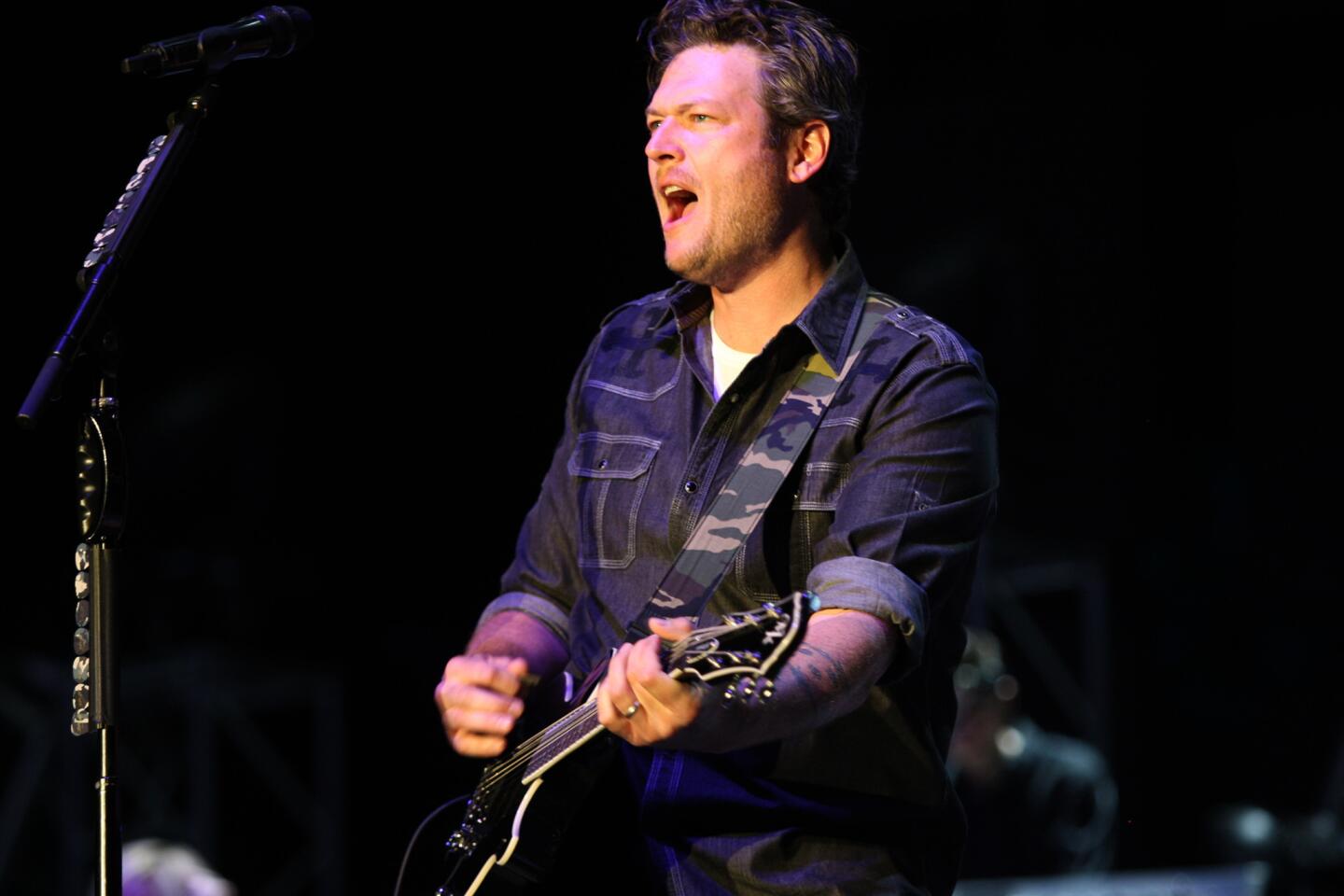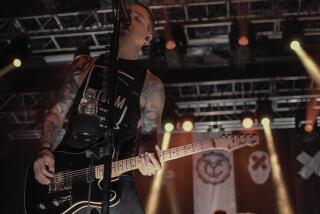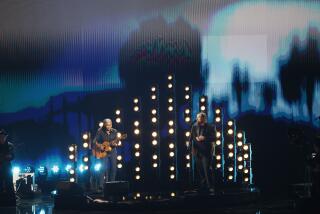Daft Punk’s ‘Random Access Memories’ engineered to make past feel new
One of the biggest albums of 2013 could have been made in the ‘70s or ‘80s.
The French duo Daft Punk’s “Random Access Memories” uses the funky disco guitars, airtight drums and analog synthesizers that soundtracked bygone eras of L.A. nightclub hedonism. Yet the album was a smash hit, debuting atop the Billboard album charts and selling over 300,000 copies in its opening week.
The project of Thomas Bangalter and Guy-Manuel de Homem-Christo, Daft Punk earned Grammy nominations for album of the year and record of the year (for their inescapable single “Get Lucky”), and their planned live performance with Stevie Wonder, Pharrell Williams and Chic’s Nile Rodgers is the most anticipated set of Sunday’s Grammy telecast.
How did such a vintage-inspired album come to dominate today’s pop radio and dance floors? One answer might lie in another, less-sexy Grammy category where “Random Access Memories” is nominated: best engineered album, non-classical.
FULL COVERAGE: Grammy nominations 2014
The six veteran mixers, engineers and mastering technicians nominated for their work on the album are one important reason why the record sounds so distinct. In a time when most pop albums are composed and mixed almost entirely on computers and major-label recording budgets dwindle, “Random Access Memories” is a testament to older, slower ways of cutting records — and to the engineers who know how to make them.
“I remember setting up mikes for one snare drum for them and Thomas said it sounded too modern, it’s got to be warm and he didn’t want that edge,” said mixing engineer Mick Guzauski. “I haven’t had an experience like this since the mid-’80s.”
The “Random Access Memories” engineering team worked to make recordings that can compete on radio and raves today, but used techniques to capture sounds that feel as human as the best classic rock. In a dance-music genre that prizes inventive sonics, Daft Punk’s engineers helped them make the past feel new.
Daft Punk recorded a big portion of the album at Henson Studios in Hollywood, where the band keeps offices. Inside Henson, vintage reel-to-reel tape machines line the walls, and one feels the ghosts of the classic albums recorded here: Joni Mitchell’s “Blue” and Carole King’s “Tapestry” among them.
TIMELINE: Grammy Awards through the years
A week before the Grammys, four of the engineers nominated for their work on “Random Access Memories” gathered there and remembered how good it felt to take their time recording.
“Anyone can record in their house, it’s so cheap and simple to make a record today,” said Peter Franco, one of four nominated engineers who worked with the band during the recording process (another two of the nominees, Bob Ludwig and Antoine Chabert, mastered the album). “But there’s a process that’s been lost. All of my favorite albums were done in these kinds of studios. I think Daft Punk wanted to have that experience and see what they could do here.”
America is awash in the electronic dance music (or EDM) that Daft Punk helped popularize in the late ‘90s and early 2000s. Much of it is made on computer software using samples and virtual instruments.
On “Random Access Memories,” Daft Punk largely ditched the digital trickery of their old albums (where they used software and machines to sample and manipulate pieces of tracks). Here they only used hand-designed electronics like modular synthesizers and vocoders. They collaborated with veteran guests like Rodgers, disco producer Giorgio Moroder, the Oscar-winning songwriter Paul Williams and a bevy of session musicians who had performed on Michael Jackson, Eric Clapton and Herbie Hancock albums.
In another shift from the band’s futuristic musical aesthetic, Daft Punk hired a team to re-create the expensive, perfectionist L.A. recording sessions of the ‘70s and ‘80s. Over five years, the engineering crew — Franco, Guzauski, Florian Lagatta and Daniel Lerner — worked with the band in world-class L.A. studios like Henson, Capitol and Conway, along with Electric Lady in New York City and their own Paris studios.
An engineer’s job can range from selecting and properly placing microphones to running the mixing board, choosing effects and generally using their technical expertise to execute a band’s vision for their sound.
While the team used music editing software like Pro Tools to assemble tracks, most of the album was recorded onto several different analog tape formats through vintage microphones, outboard effects rigs and a hulking and well-preserved Neve mixing desk, not unlike the one celebrated in Dave Grohl’s big-screen documentary tribute to analog recording, “Sound City.”
The conditions behind the recording of “Random Access Memories” — one of the music industry’s biggest acts secretly spending around a million dollars of their own money to record in L.A.’s most expensive studios for half a decade — aren’t likely to be repeated soon.
“These were such luxurious sessions,” said Lagatta, the French engineer who handled much of the vocal engineering on the album. “It was paradise in the studio. Budgets today are so little and this was such a pleasure.”
BALLOT: Cast your votes at home
“What we got to experience, to have master musicians in the greatest spaces, was the most amazing thing,” Lerner said.
But as pleasurable as the album was to make, Daft Punk’s fetish for vintage recording methods meant that their tracks would, in some ways, purposefully feel behind the times.
“In the mix, a lot of times we were trying to get back to how things sounded before the ‘volume wars,’” said mix engineer Guzauski, referring to the recent fad for using compression to make pop songs feel louder.
Modern pop and dance music uses techniques like digital compression to make records stand out, a necessity for pop radio formats where songs have just seconds to grab a listener. The engineers’ challenge was to capture the vintage, precise feel that Daft Punk wanted, but also hold the ears of a teenager streaming songs on Spotify through cheap Apple ear bud headphones.
INTERACTIVE: Times music staff best of 2013 list
To help get that effect, the band mastered “Random Access Memories” with Ludwig in his Gateway Mastering studio in Maine (the Paris-based Chabert also worked on the mastering). Mastering, the process where a completed mix is adjusted for optimal volume and tone, is especially crucial to dance music, which depends on tracks hitting listeners hard.
“I’ve never heard music that shows up the most subtle differences in gear like their music,” Ludwig said via email. “When they play back the disc in clubs, because the recording is not squashed like 90% of electronica music seems to be, the record bursts through with punch and dynamics.”
That the Grammys acknowledged the uniqueness of the engineering project was special validation for the team, even for career veterans like Guzauski and Ludwig who have worked on records by the likes of David Bowie, Mariah Carey, Bruce Springsteen and Michael Jackson.
“It’s so rare for an album to be up for album of the year and best engineered album today,” Franco said. “It used to happen a lot more in the ‘80s, like with Quincy Jones records.”
PHOTOS: Faces to watch 2014 | Pop music & jazz
None of the “Random Access Memories” engineering team expects a comparably expensive and painstaking album project like this to come along again any time soon. But they all hope the album influences the way younger acts approach making records.
Few artists will have Daft Punk’s million-dollar budget and years of recording time, they said. But there’s still a lot for young producers to learn from the engineering process of “Random Access Memories.” Acts who want to last longer than a sonic fad need to pay attention to recording technique — just like they did in the ‘70s.
“It’s definitely changed the way I’m going to look at other projects,” Franco said. “I’m noticing a lot of young electronic acts are using live elements in performances. They’ll have drummers and singers. Kids are picking up instruments again.”
More to Read
The biggest entertainment stories
Get our big stories about Hollywood, film, television, music, arts, culture and more right in your inbox as soon as they publish.
You may occasionally receive promotional content from the Los Angeles Times.


